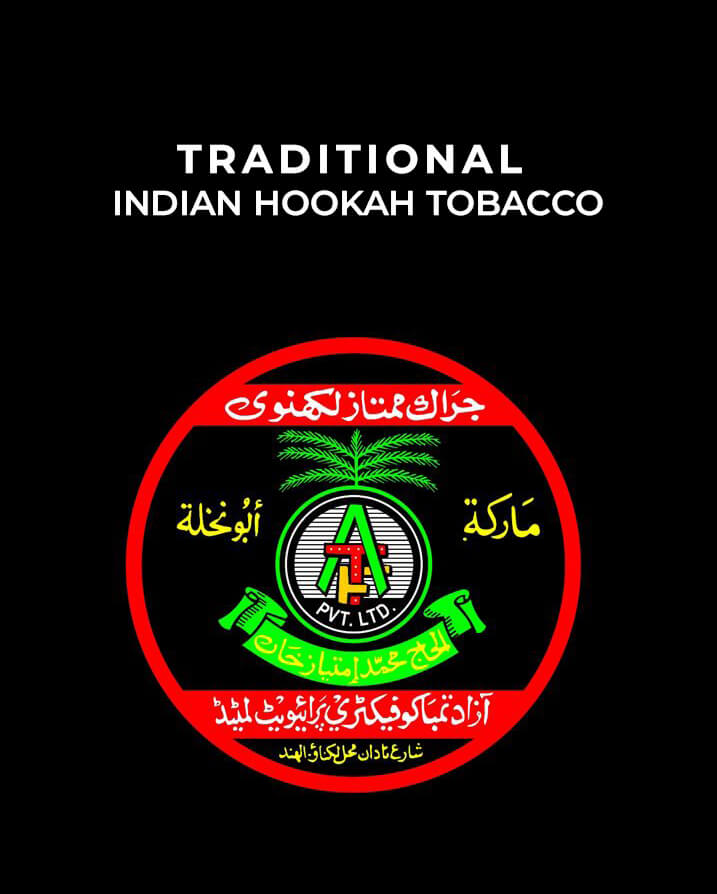Hookah and Tobacco

History of traditional Indian Hookah Tobacco
In the Indian city of Fatehpur Sikri, Roman Catholic missionaries of the Society of Jesus arriving from the southern part of the country introduced tobacco to the Mughal Emperor Akbar The Great (1542–1605 AD). Louis Rousselet writes that the Physician of Akbar, Hakim Aboul Futteh Ghilani, then invented the hookah in India.
However, a quatrain of Ahlī Shirazi (d. 1535), a Persian poet, refers to the use of the ḡalyān (Falsafī, II, p. 277; Semsār, 1963, p. 15), thus dating its use at least as early as the time of the Shah Ṭahmāsp I. It seems, therefore, that Abu’l-Fath Gilani should be credited with the introduction of the ḡalyān, already in use in Persia, into India. There is, however, no evidence of the existence of the water pipe until the 1560s. Moreover, tobacco is believed to have arrived in India in the 17th century, until then cannabis was smoked in India, so that suggests another substance was probably smoked in Ahlī Shirazi's quatrain, perhaps through some other method.
Following the European introduction of tobacco to Persia and India, Hakim Abu’l-Fath Gilani, who came from Gilan, a province in the north of Persia, migrated to Hamarastan. He later became a physician in the Mughal court and raised health concerns after smoking tobacco became popular among Indian noblemen.
He subsequently envisaged a system that allowed smoke to be passed through water in order to be 'purified'. Gilani introduced the ḡalyān after Asad Beg, the ambassador of Bijapur, encouraged Akbar I to take up smoking. Following popularity among noblemen, this new device for smoking soon became a status symbol for the Indian aristocracy and gentry.
Hookah parts/components/accessories
The hookah mainly consists of four parts with charcoal: the Satak (mouthpiece), the Chilam
(the bowl used for smoking), the Naicha (the tube) and the Penda (the water bowl or base)
and traditional charcoal.
The hookah is used to cool down the hot smoke that comes from burning tobacco. The
smoke is cooled by being sucked down through the hookah's base, which is filled with water.
The cooled smoke is then pushed up through pipes and into the smoker's mouth.
Hookahs typically were used in coffee houses or for social gatherings. However, you may
know the hookah best as having been used by the Caterpillar in the book Alice in
Wonderland.
Type of Tobacco
- Kadwa Khamira (Strong Tobacco)
- Meetha Khamira (Light Tobacco)
- Mushki Khamira (Premium Tobacco)
Tobacco used in Hookah called Khamira.
Famous Brands
Exporting to Saudi Arabia, Tunisia and Libiya.
Culture of India
The concept of hookah is thought to have originated in medieval India. Once the province of the wealthy, it was tremendously popular especially during Mughal rule. The hookah has since become less popular; however, it is once again garnering the attention of the masses, and cafés and restaurants that offer it as a consumable are popular.
The use of hookahs from ancient times in India was not only a custom, but a matter of prestige. Rich and landed classes would smoke hookahs.
Tobacco is smoked in hookahs in many villages as per traditional customs. Smoking tobacco-molasses is now becoming popular among the youth in India. There are several chain clubs, bars and coffee shops in India offering a wider variety of mu‘assels, including non-tobacco versions. Hookah was recently banned in Bangalore. However, it can be bought or rented for personal usage or organized parties.
Koyilandy, a small fishing town on the west coast of India, once made and exported hookahs extensively. These are known as Malabar Hookhas or Koyilandy Hookahs. Today these



